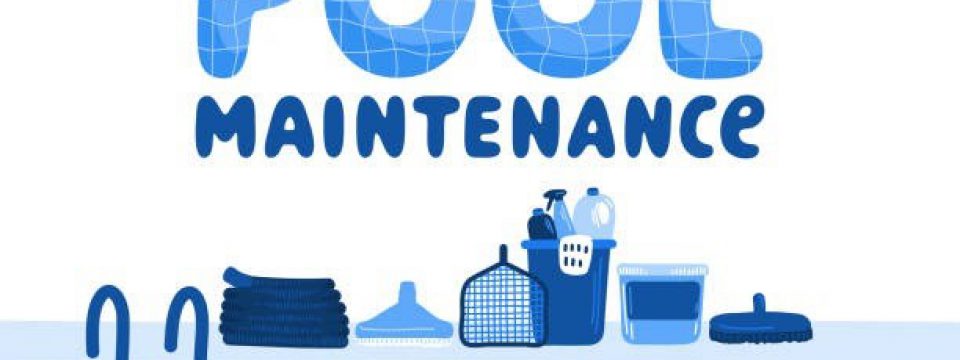You can hire a pool maintenance company to keep your pool water healthy and clean for swimming, but you can do most of the work yourself. Below is our easy guide to pool maintenance:
1. Pool water care
The pool water must be clear enough for the coin to be visible at the bottom of the pool. It should be free of turbidity, organic matter, and bacteria. Also, the pool water evaporates, and a chemical change occurs.
Another change occurs in the chemical balance when you add water to raise the water level in your filter skimmers. To keep your water clean, you need to monitor your pH level constantly.
2. Check water chemistry
Check the water regularly, at least once a week. When purchasing a pool, you must purchase a test kit. The most straightforward kit usually includes color-coded strips. The strips should be dipped in water and compared to the colors on the container.
Another test kit requires filling a bottle with pool water and adding a few drops of liquid reagent or water coloring tablets. Then you compare the color to the colors on the container. Either way, the colors will tell you how many disinfectants, pH, or alkalinity your water needs to bring it to a healthy level.
A few tips!
- Use a new water testing kit every season.
- Before checking, make sure the filter has been running for about half an hour.
- Use the test kit in a pool area not adjacent to the skimmer or in the corner of the pool where you cannot completely filter the water.
3. Adding chemicals
When handling chemicals and adding them to the pool, strictly follow the chemical manufacturer’s instructions.
If you test the water yourself, you will also add chemicals based on your findings. What is the correct way to add chemicals to water?
a. Powders. There are usually two ways to add them to water. The first is to add the powders directly to the water. The best way to ensure even distribution of powders is to pour them into different parts of the pool slowly.
Don’t just toss them while standing, as the wind can throw the powder back at you. Instead, bend over and gently pour in a small amount of water. The problem with this method is that the powders can take time to dissolve.
Another way to add powdered chemicals is to mix them with pool water taken directly from the pool in a dedicated bucket. Thus, the powder has time to dissolve before adding it to the water.
b. If using liquid chemicals, pour the solution directly into the pool water but avoid splashing.
c. Tablets placed in a floating dispenser are another way to add chemicals. Please place them in a device that floats around the pool and dispenses chemicals.
Whichever method you use, never add chemicals directly to the skimmer because they can be filtered out in the filtration system before they can circulate in the pool.
4. Shocking pool
After a heavy rain, in extreme heat, or after a big party where many people have used the pool, you may need to shock or severely chlorinate the water.
It will help remove dirt. The pool specialist will help you determine if you need to shock the pool. A preliminary water analysis will also help determine if you need to super-chlorinate your pool.
5. Empty skimmer baskets
Check skimmer baskets for debris and empty them daily. Pull the baskets out, empty the contents and rinse them with water from the pool or hose. It will help maintain proper filter and pump performance.
A clogged skimmer basket will obstruct the flow of water through the system. Sometimes leaves, grass clippings, insects, or other fine dirt will get into the water. To do this, use a long-handled pool net to remove debris from the surface of the water.
Keep it handy, as you will need to do this almost every day to keep the surface clean. Do not rely on skimmer baskets to clean the surface. These routine tasks can help you maintain a healthy and clean pool environment.
6. Vacuum and clean
If you plan to do routine tasks yourself rather than hire a cleaning service to keep your pool clean, you will need to vacuum. Vacuum the entire pool bottom and collect debris along the way. You can choose a vacuum cleaner depending on your type of pool.
To use the vacuum cleaner correctly, you must read the manufacturer’s instructions. Vacuuming is not difficult at all. Especially if you buy an automatic vacuum cleaner, they move along the bottom of the pool and clean for you.
7. Brush the sides of the pool
Should clean the liner or tiles on the concrete pool every two weeks to prevent algae from accumulating above and just below the waterline. To do this, you will need a tile brush and a unique pool tile cleaner that works well for vinyl, tile, and fiberglass pools.
Tip! Do not use household detergents to allow foreign chemicals to enter your pool
Conclusion
As you can see, taking care of the pool is easy!
All you need for independent work is
- Skimmer
- Test kit for water and chemicals
- Vacuum cleaner
- Garden hose
Tip! To organize everything correctly, make a schedule for cleaning the pool and strictly follow the schedule.
When you do this job a few times, you will become very good at your pool’s needs! You will become a pro! And you will enjoy swimming in the pool with your friends and family!
Salman Zafar is an acclaimed blogger, editor, publisher and digital marketer. He is the founder of Blogging Hub, a digital publishing portal with wide following across the world.



2 thoughts on “An Easy Guide to Pool Maintenance”